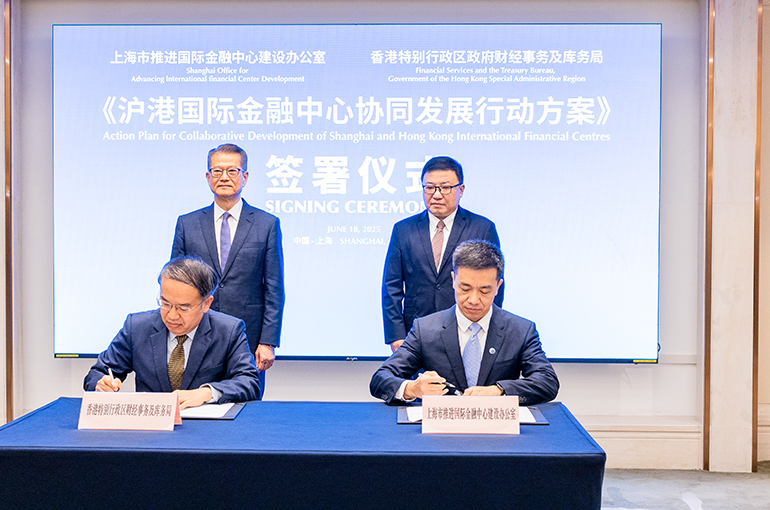 Shanghai, Hong Kong Ink Deal to Beef Up China’s Global Financial Clout
Shanghai, Hong Kong Ink Deal to Beef Up China’s Global Financial Clout(Yicai) June 18 -- Shanghai and Hong Kong signed a deal at the Lujiazui Forum today, aimed at fostering the coordinated development of the two financial centers, enhancing their respective strengths, and increasing China’s influence in the global financial system.
The joint action plan sets out 38 measures across six key areas. It calls for deepening financial market infrastructure links, including the bond and swap connects, and new collaboration in cross‑border clearing, gold‑product trading, and transborder uses for the digital yuan.
The plan also envisages co-development of financial products and services, combining Shanghai’s onshore financial strengths with Hong Kong’s offshore, stepping up green finance cooperation, broadening the use of artificial intelligence and blockchain in asset management, insurance, and settlements, and aligning policies to back tech and other innovative firms.
The two cities can learn from how London and New York work together as global financial hubs, and make full use of China’s strengths in data and digital technology to power innovation in the offshore financial sector, Sheng Songcheng, professor of economics and finance at the China Europe International Business School, said at the forum.
He added that this partnership could establish a “dual‑circulation” regulatory model for the onshore and offshore yuan, strengthening China’s voice in international finance amid fluctuations in US dollar credit.
Turnover on Shanghai's financial markets jumped 8.2 percent last year to CNY3.6 quadrillion (USD508.1 trillion). The Shanghai Stock Exchange ranked third globally for market capitalization and fifth in terms of trading volume, while its interbank bond market is the world’s second largest.
As the main center for global yuan asset allocation, around 70 percent of Shanghai’s cross-border transactions are settled in the redback, accounting for half of the country’s total.
Hong Kong had yuan deposits of CNY1.1 trillion (USD153.1 billion) at the end of 2024, providing critical liquidity for offshore yuan trading. Its yuan real-time payment system handled an average of CNY3 trillion a day, up 50 percent from the year before, and processed about 75 percent of global offshore yuan payments, consolidating its position as the main offshore yuan liquidity pool.
The Lujiazui Forum, an annual event for discussing major issues in the financial sector, runs from today through tomorrow.
Editor: Kim Taylor